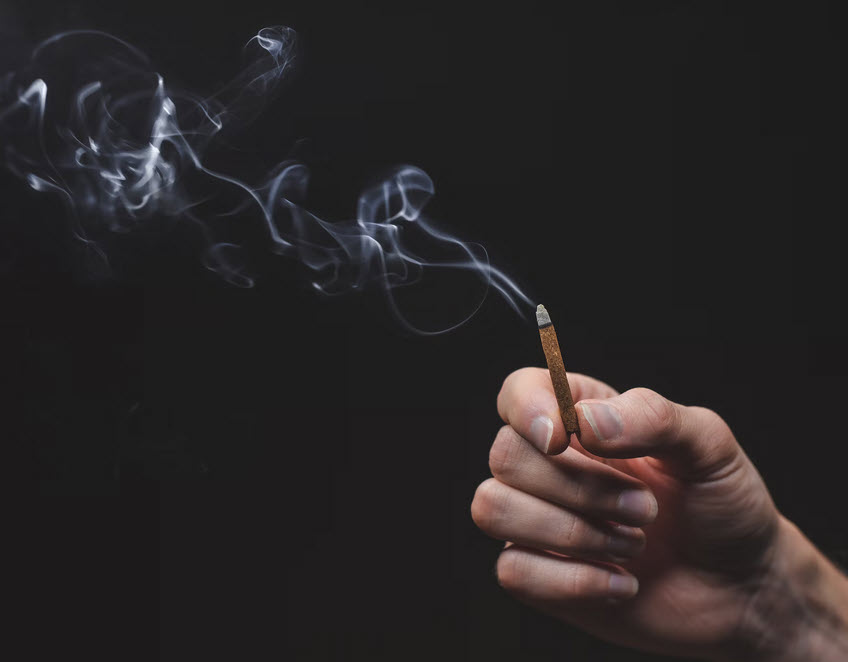As artists, no matter what medium we employ, our job is to make the right decision.
Does yellow look best as a highlight on that purple grape? Will adding gold leaf to this acrylic medium enhance it or make a mess? How will this nylon thread react to the encaustic medium?
There is always more than one right answer, but there is usually just one answer that gives you the “eureka shivers“ that it’s the best one. And to get to that, you have to try some different solutions.
Take arms, for example. I am constructing some of my beloved Wanderer figures for an exhibition at Jane Bishop’s Mockingbird Handprints in December. Here’s one in progress – I already love the layered fiber wrapping:
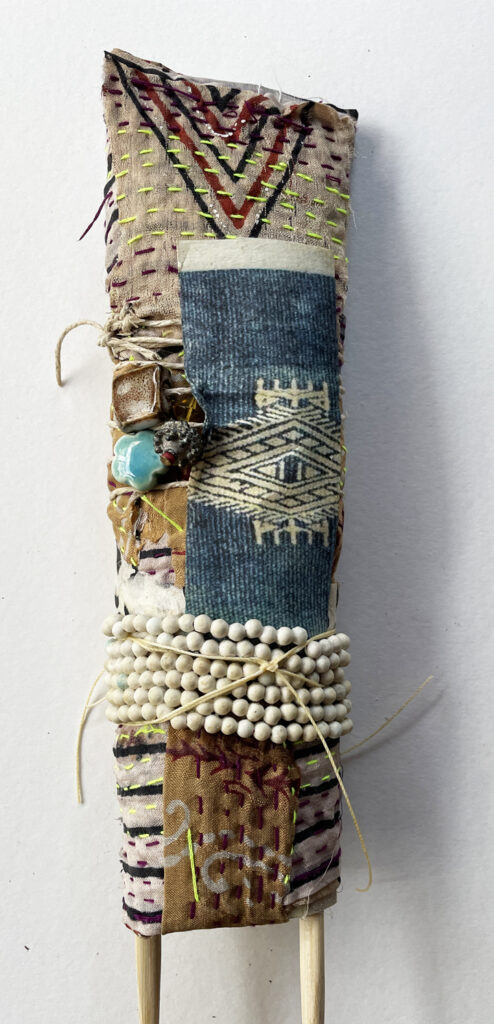
So I have the head ready – but does it need arms? (Decision=Yes) If so, what kind?
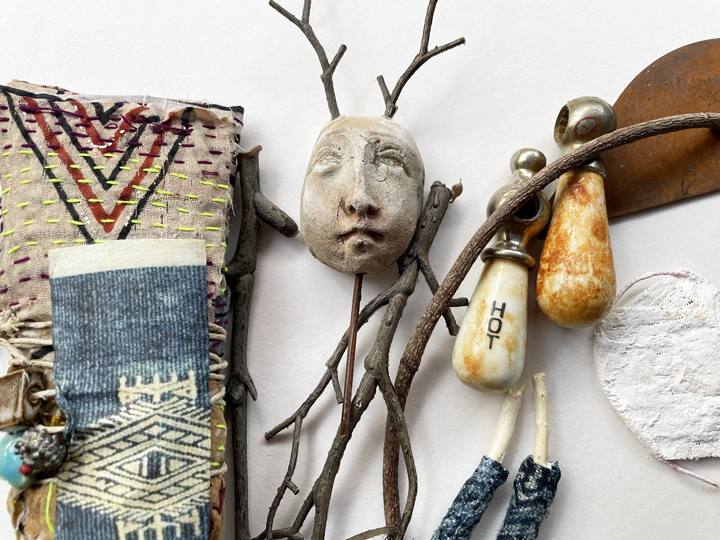
First idea – how about plaster wings??
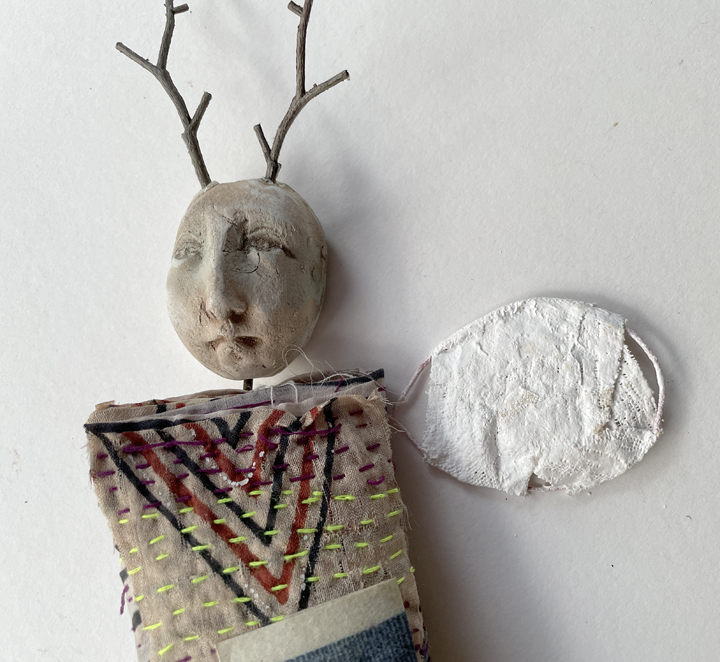
This might work if I sprayed it with terra cotta walnut ink – or rust paste, and added another one on the left side…but the shape and weight just aren’t quite right.
How about something really different?? Shannon Weber gave me these great old vintage faucet taps–
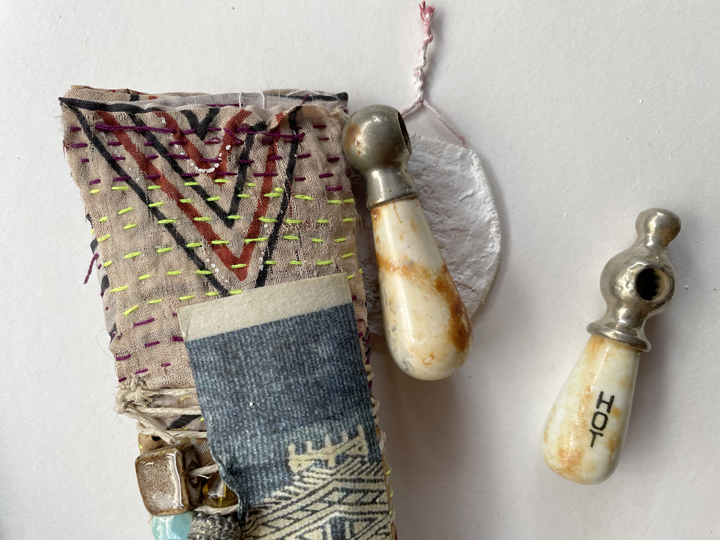
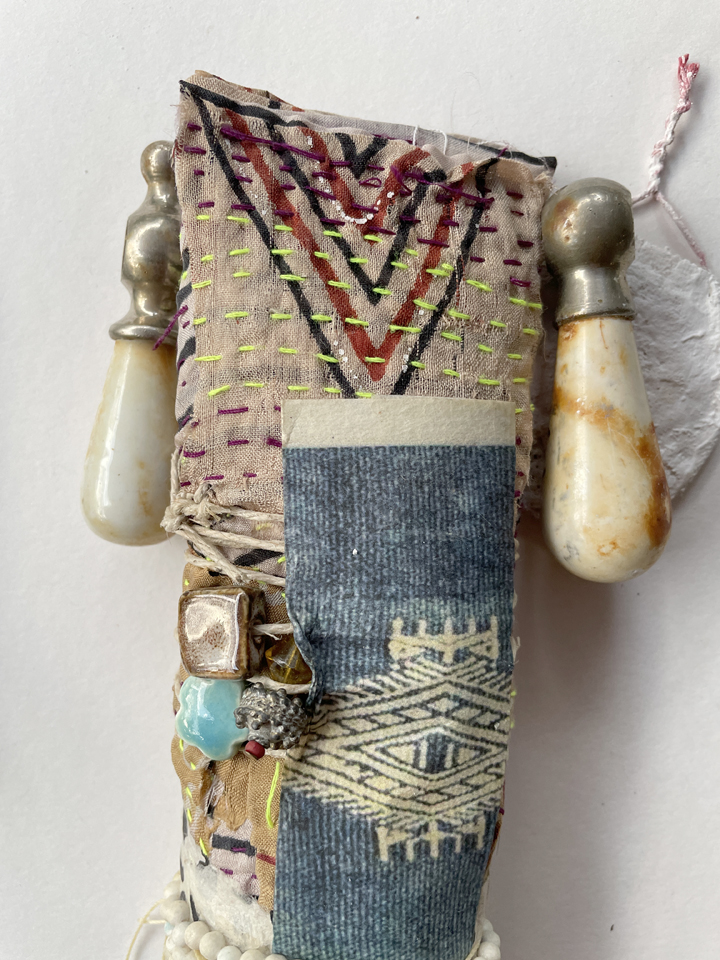
They are cool, but they almost need their own sculpture to be a part of, one that shows them off more. These “arms” compete with the layered and wrapped body.
How about sticks?? Like the ones on the head?
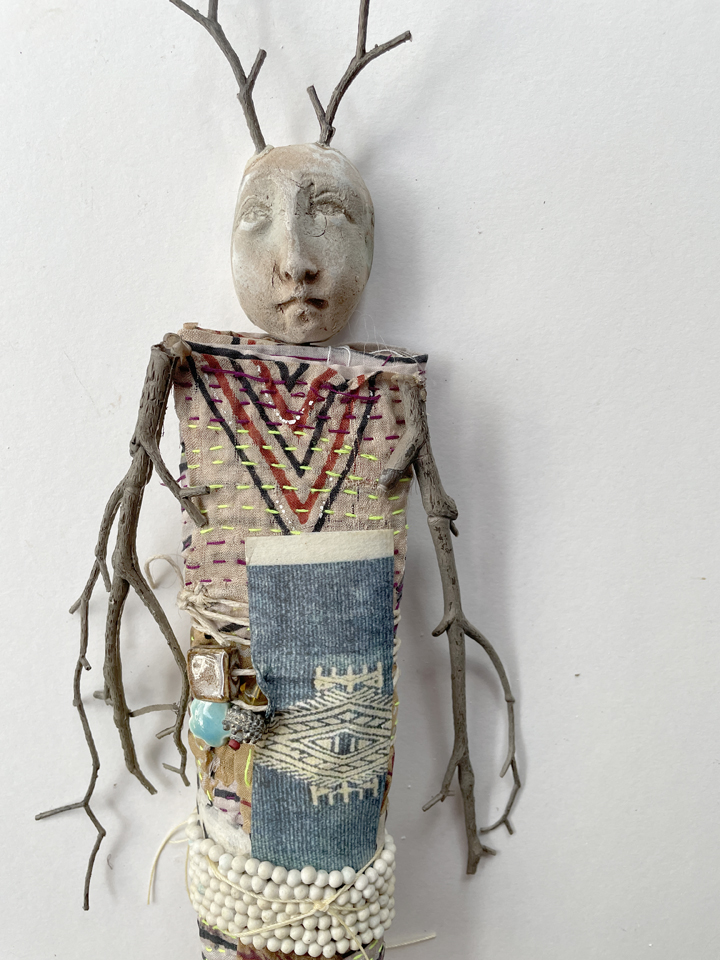
Close, but no cigar – too matchy-matchy.
How about just one curvy stick??
Up? Down?
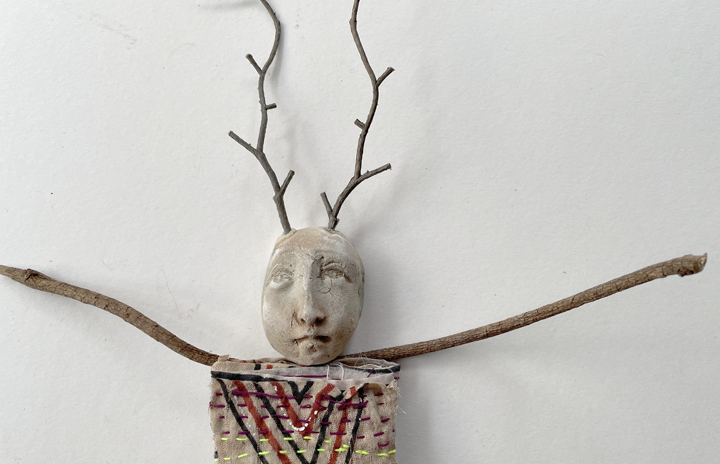
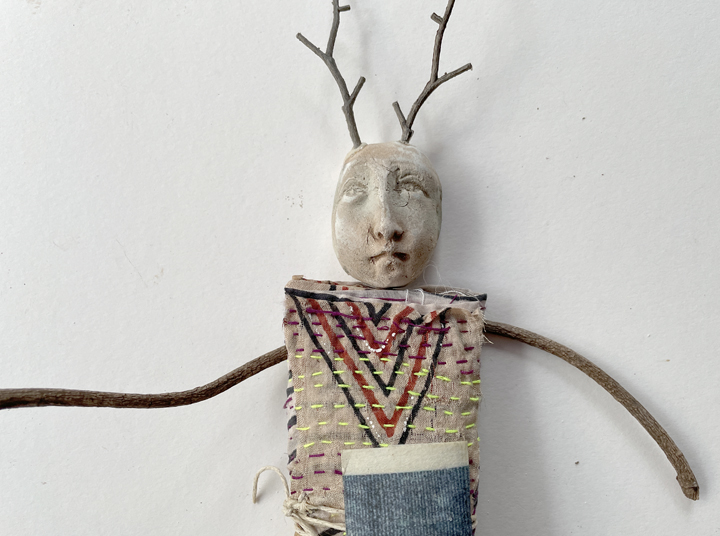
Not quite there – too spindly in relation to the body. But I got an idea from this experiment – since the body is wrapped in fiber, why not wrap some stick arms in the same way?
This is the result, and it gave me the “eureka shivers“. Just right!
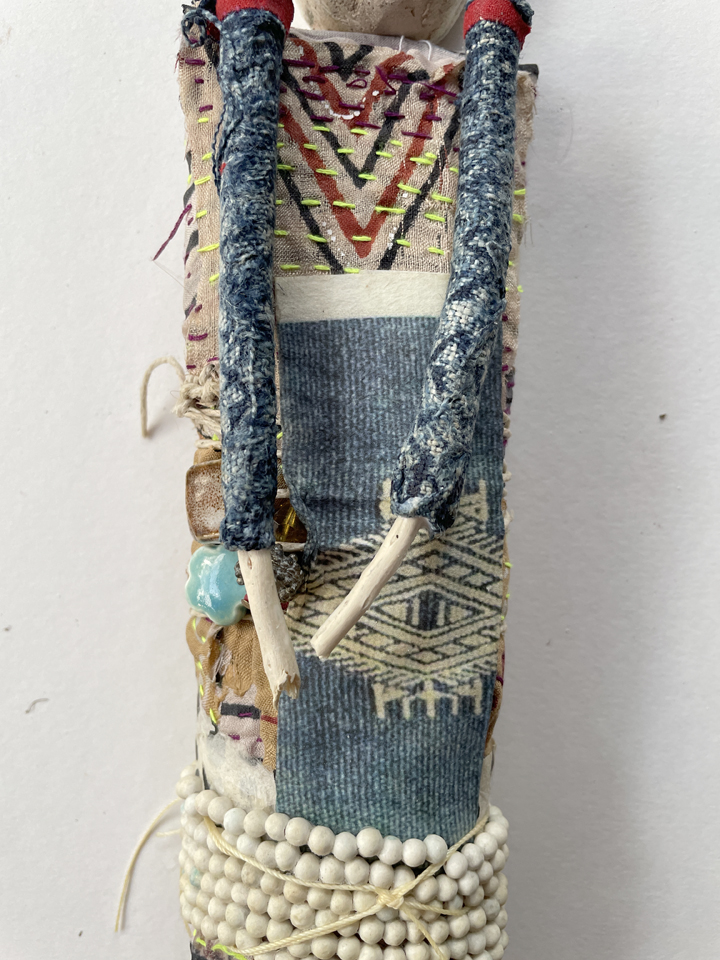
Sorry to say that you won’t see the finished Wanderer yet – I sewed her arms on last night (they look great) and I’m still adding her special touches, but you will see her soon.
Here’s the take-away – when you see finished artwork that resonates with you, whether it’s a painting or a sculpture or a piece of jewelry, remember that what you see is a process of informed and personal decision making that is hard work and takes a lot of time, love, and experience. The artist thought and experimented and perhaps failed and tried again to get the piece just right for you to see and appreciate.
Try to imagine the back story – put yourself in the artist’s place and see where complex decisions were made to find the “eureka shivers” moment in every step.
Thanks for reading!!

